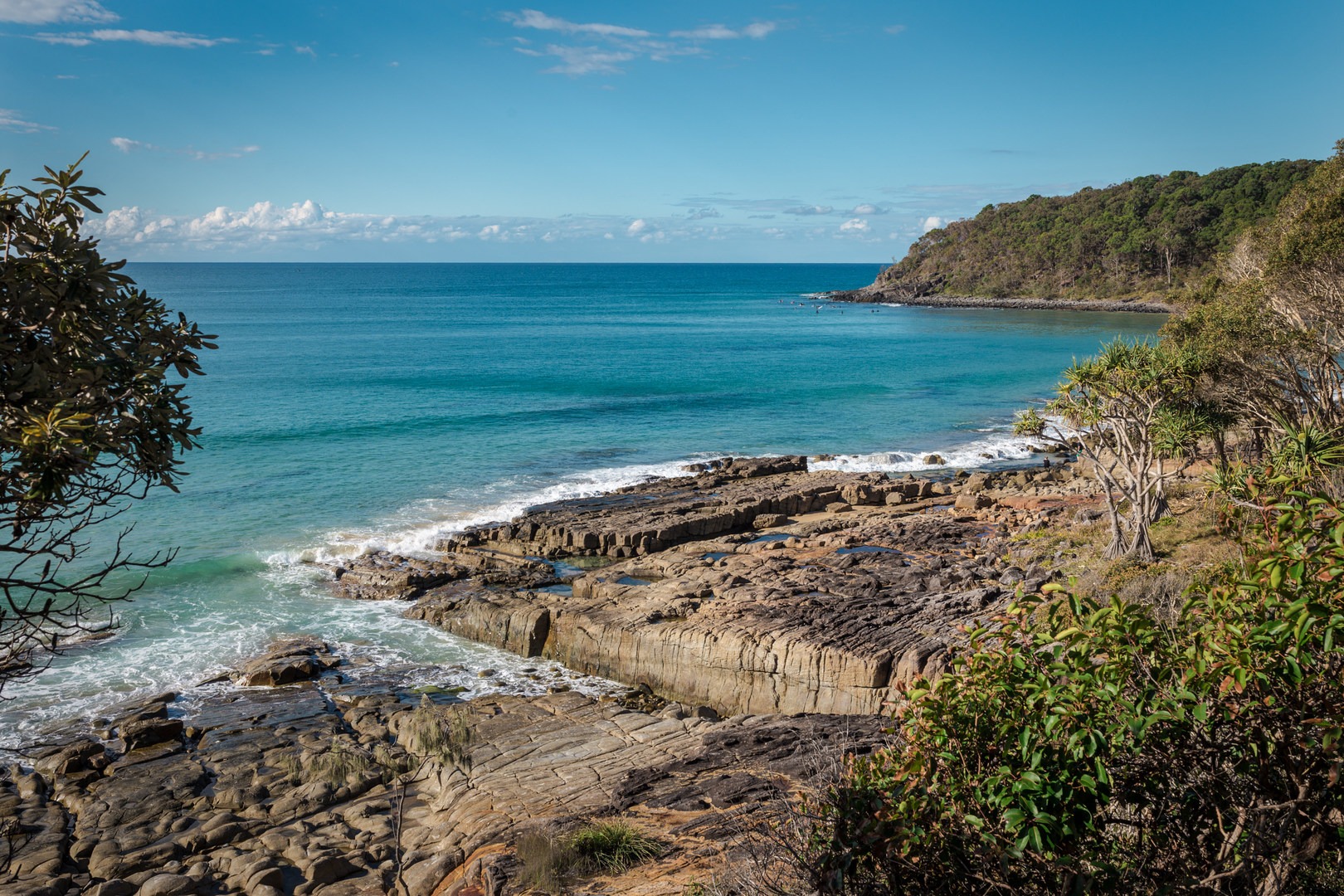You are here
The coastline of Noosa holds some of Queensland’s most picturesque scenery and is a tourism hotspot of the Sunshine Coast. Famous for its secluded beaches, great surf, and rugged coastline, the iconic headland of Noosa can be well-explored in the 15 kilometers of walking trails that encompass Noosa National Park. The most popular national park in Australia, Noosa receives more than 1 million visitors annually, remarkable for a park of its size.
Walking Tracks
There are many walking tracks that begin at the Noosa Headland day-use area, including the Coastal Walk that will take you along the gorgeous cliffside lined with she-oaks and pandanus palms. Enjoy the bounty of sweeping ocean landscapes around Boiling Pot and Dolphin’s Point as you search for dolphins, turtles, and migratory humpback whales (between June and November) in the turquoise waters below.
Continuing along the coastline, an area properly dubbed “Fairy Pools” contains crystal-clear swimming pools down on the shore. Do be careful and mindful of tides and waves if you do want to enter any of the coastal shoreline areas. There are no lifeguards to patrol these waters, and the waves along this shoreline can be notoriously rough! With that being said, you may see some local surfers taking advantage of these awesomely remote shorebreaks.
At the end of the coastal walk is Hell’s Gates, a rocky lookout where thunderous waves crash onto the rocks below. The route to Boiling Pot (300 m, one way) and Dolphin’s Point (1.2 km, one-way) along the Coastal Walk is accessible for wheelchairs and strollers, but the section from Dolphin’s Point to Hell’s Gates (2.7 km, one-way) is steeper and less-maintained.
Venture onto one of the other walking tracks from the day-use area like the short Palm Grove Circuit (1.1 km return) to take in the sights and sounds of the forest or the Tanglewood Walk (8 km return) through the remote inland forests to look for koalas, ace monitors, echidnas, and red-backed fairy wrens. For bushwhacking enthusiasts, try the Alexandria Bay Walk (4.2km return) along the southern headland and eucalyptus forest that is great for birdwatching.
Surfing
In 2014, Noosa National Park was approved as a National Surfing Reserve by Australia’s National Surfing Reserve Board. Encompassing the coastal areas adjacent to Noosa National Park, the reserve includes (but isn't limited to) five right-hand, north-facing point breaks at Granite Bay, Tea Tree, National Park, Johnsons, and First Point. In general, swells at Noosa arrive from the southeast, and Noosa's north-facing point breaks rely on cyclone swells and Fiji-based easterly winds. Noosa's east-facing breaks are more consistent, albeit less dramatic when the swells are up.
- Granite Bay: Requiring a half-hour walk, if you are lucky enough to park in Noosa's lone parking lot, Granite Bay is the most isolated of Noosa's world-class breaks. Facing a slightly different direction than the other breaks, it can pick up swell when others can't. Waves average 2 to 5 feet in height, but when up Granite Bay has the biggest waves in Noosa—as high as 15 feet. Be wary of rocks, and exit waves well away from shore.
- Tea Tree: Boasting the best waves and the best scenery, Tea Tree is a world-class break. Waves average 1 to 4 feet with greater potential and good barrels at lower tides. Keep an eye out for turtles and dolphins.
- National Park, or Nationals: A challenging break with a difficult takeoff zone and rock hazards, the payoff for advanced surfers is a long, shifting ride that spans from the Boiling Pot through Little Cove and past First Point. Waves average 2 to 4 feet with potential for higher during swells. Look for koalas on shore.
- First Point: A famous longboarding hotspot, First Point is home to the annual Noosa Surfing Festival. Waves average 1 to 3 feet. Swells from the east bring consistent 5-foot waves, and with them come the crowds. On small days, First Point is ideal for beginners. When the waves are high, short boards are ideal.
Parking
Parking is very limited at Noosa National Park. At the end of Park Road at Noosa National Park's northwestern entrance, a day-use area and information center also provides the national park's lone parking area. Parking is also available in the adjacent neighborhoods, but at its busiest street parking here will create a disruption for locals and is not advisable. Public transit does not stop at the park, but bus stops can be found nearby:
- at the intersection of Noosa Drive and Noosa Parade near the park information center at its northwestern entrance;
- on Solway Drive near the Parkedge Road entrance to Noosa National Park;
- in Sunshine Beach on Duke Street near the park's southern boundary.
Pets
Pets are not allowed in Noosa National Park.
Logistics + Planning
Current Weather: Powered by Dark Sky






























Comments
Sign In and share them.